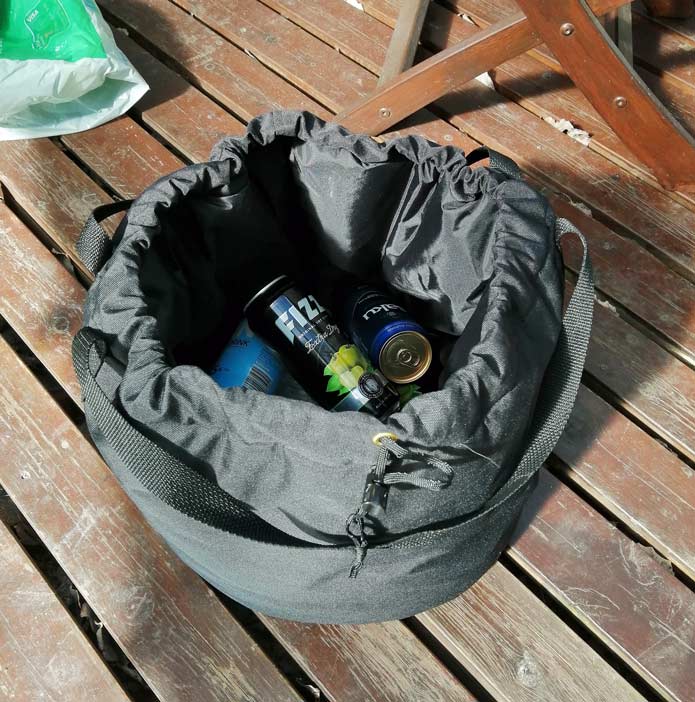 Loading... Please wait...
Loading... Please wait...- Contact
- wiggys@wiggys.com
- Home
- News + Commentary
- non-useful companies
Recent Commentary
News & Commentary Archives
Learn More
Subscribe to Wiggy's Newsletter » Receive updates about new products, specials, and learn about insulation technology
non-useful companies
Posted by jerry wigutow on May 29th, 2020
JOURNAL OF CLEANER PRODUCTION
This morning I read an article in the online publication of Sporting Goods Business about Adidas and Allbirds shoe companies joining forces to create new shoes that would have a smaller carbon footprint. The following explains what they are trying to accomplish. I quote the following from the article.
“The press release announcing this collaboration quoted a study published in the “Journal of Cleaner Production” in 2013 claiming that the average running shoe has a carbon footprint of about 13.6 kilograms of CO2, and outlined the two companies’ joint intention to “set a new industry standard” by lowering that number together.”
I must admit that while I have heard for several years about “carbon footprints” I really do not know what they are nor do I care. However, in my somewhat quest to find out what a carbon footprint is I went to the Journal of Cleaner Production mentioned in the article. I quote from the article the following.
“The Journal of Cleaner Production (jcp) is an international, transdisciplinary journal focusing on Cleaner Production, Environmental, and Sustainability research and practice. Through our published articles, we aim at helping societies become more sustainable.”
What if nobody reads the articles they publish? I for one have never heard of this publication. From what I saw on their web site the depth of non-sensical information is astounding. And it actually says nothing beyond what I have reproduced as quotes. I further quote.
'Cleaner Production' is a concept that aims at preventing the production of waste, while increasing efficiencies in the uses of energy, water, resources, and human capital.”
“Cleaner production” is not a concept but a reality that companies particularly large manufacturing companies, practice, if you will, and have been practicing for years. All these people at jcp should watch “How its Made” and they would see that when ever possible excess material known as fallout is recycled. This recycling is standard operating procedure. These companies maximize all of the rest of the uses mentioned.
This method of running a manufacturing a facility in the USA has been going on for years, and when I say years, I mean years. When I started in the textile business (1961), I walked into factories located in NYC selling my fabrics. I saw bales of scraps the fallout from cutting the materials. I was told all of these scraps were picked up by companies that chopped them up for use as filler in quilting. This is what was used (shoddy) before polyester was used. The manufacturers generating this waste product paid to have it taken from them. Then this waste product was repurposed and sold. So, it really wasn’t waste.
From what I gleaned from the jcp web site was that the articles published were written by any number of people and submitted to jcp and the jcp people did or do not physically check to see if the information in the articles was accurate or not but they then put the article before a board to discuss and determine if it was okay to publish.
Maybe I should write an article for them explaining why Wiggy’s has a 0.0 footprint. What ever waste we do generate we do not throw it away we bail it to the size of a bale of hay and sell it to people who use it for bow targets. Some is purchased by individuals and most is purchased by one company in Canada. There are a few USA companies but they get all they need from who knows where. What I do know is that when the arrow goes into the fiber it displaces the fiber and when the arrow is removed the fiber goes back to where it was, similar to water.
I do not get the need for this company or any of the other companies that exist who tell manufacturers what to do and how to do it. If they have all of that knowledge why don’t they make stuff themselves?
The same holds true of the hoho institute or blue sign. They and a dozen more of these companies that thrive on telling companies in the outdoor business what to do.
From my perspective they are just full of turd.
AND NOW A TESTIMONIAL
Mr. Wigutow,
I hope that you are doing well, and that you will stay in business no matter what. We who live in the free world need high quality products that are made by people who care about what they do.
Recently I used your hot/cold bag for the first time to transport food and beverages for two hours in a car during a very hot day.
When I reached the destination, I swear that everything was just as cool as they were when I packed them in.

I'm also planning to use your bag when I go fishing or whenever I spend couple of nights in the archipelago. The advantage of a soft bag is that it won't damage any surfaces on the boat if the sea gets rough. I recommend this product for anyone who owns a boat or a summer cabin, or for anyone who has to go far for groceries.
Yours truly, Joni
Joni is a very active and therefore good customer who i publish his comments. He live in Finland.
